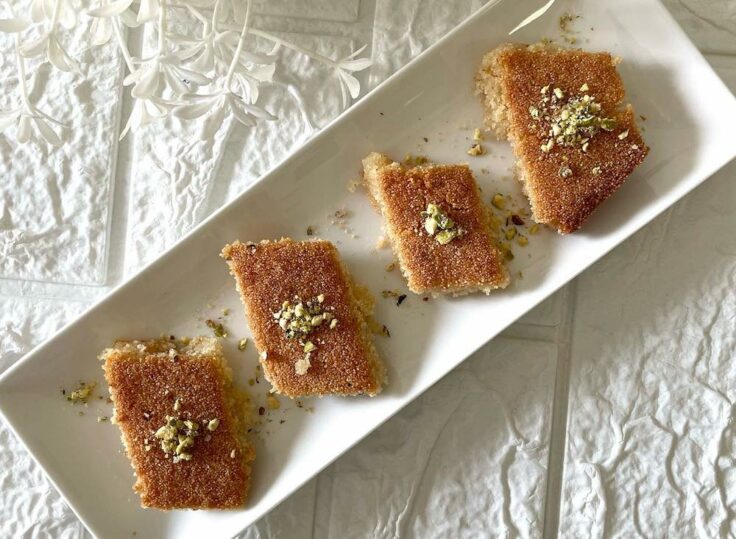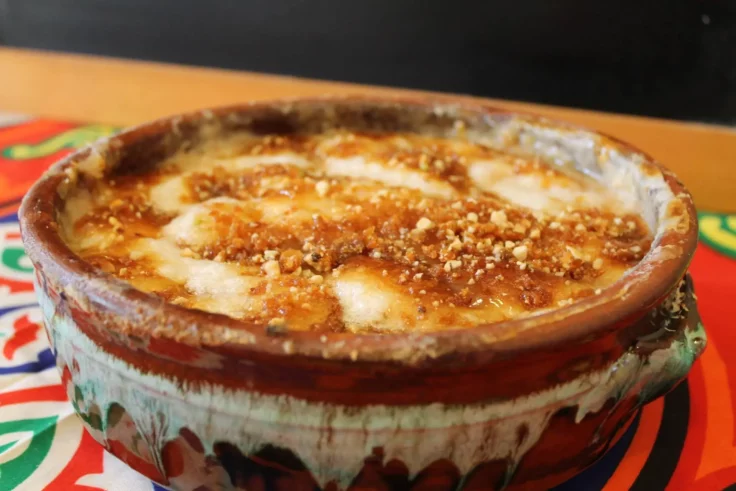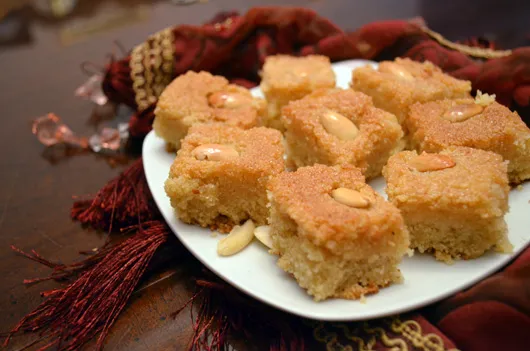In addition to being a seriously delicious source of sustenance, these popular Ramadan dishes also have a lengthy, and sometimes dark, history…
Knafeh
According to some, the famous Middle Eastern dish was created, and prescribed by doctors, to satisfy the hunger of caliphs during Ramadan. Made with vermicelli-like dough soaked in sugar syrup, layered with soft cheese, drizzled with rosewater and topped with pistachios, some sources say it can be traced back to the Umayyad dynasty in the Syrian city of Damascus, while others say it originated in 15th century Egypt.
Om Ali
Translating to “Ali’s mother,” the traditional Arab dessert can be traced back to around the 12th century in Egypt. There are several versions of the story behind the centuries-old pudding. The most popular theory pertaining to its origins is quite sinister, rooted in power, betrayal, and murder. According to the age-old legend, the story goes back to the 1240’s, when Shajar Al Durr, the first Sultana in the Middle East, gained power following the death of her first husband Assalih Ayyub, Egypt’s Ayyubid ruler. She went on to hide the death of her husband and secretly buried him, telling people that he was too ill to take visitors. She subsequently married the first of Egypt’s Mamluk Sultans, Izz al-Din Aybak, and after plotting his murder, became the ruler of Egypt. Ultimately, she was killed in retribution, whereafter Aybak’s first wife, who was known as Om Ali, asked to have a dessert prepared in celebration of her death.
Zalabia
Zalabia, or Jalebi as it’s more commonly known as today, is often referred to as an Indian dish, but did you know that its origins actually trace back to North Africa? It is said that Tunisians introduced this sweet dessert to the people of India, who loved the dish so much and adopted it into their own cuisine. Apparently, it was Abdurrahman Ibnou Nafaâ Ziriab, an Iranian musician that originated the dish and introduced it to the people of Tunisia.
Basbousa
The fragrant semolina cake oozing in honey was inspired by revani, a classic cake from the Ottoman Empire. It’s said that revani was first baked by Ottoman pastry chefs to celebrate the conquest of Armenia in the sixteenth century. The battle of Revan, capital of the country, today called Yerevan, gave its name to this famous dessert, which went on to gain popularity in Egypt. Today, it goes by several names, including Basbousa in Egypt and many Middle Eastern countries, harissa in Tunisia, kalb el louz in Algeria, and chamia in Morocco.
Sawabe’ Zaineb
There are several versions of the story pertaining to the origin of the dessert, but the most popular narrative claims that Sawabe’ Zeinab was named after Al Sayeda Zeinab bint Ali, whose father was killed during the Battle of Karbala when she was four. When the soldiers noticed that she was not letting go of his body, they cut her fingers loose, and the dessert was later named after her as a tribute to her.
Photo: Instagram/@fortheloveoffood90














